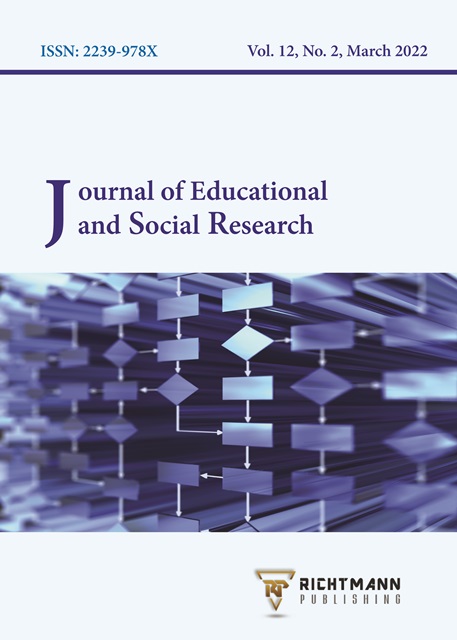Peer Group Influence and Mass Media as Predictors of Bullying Among Students: Evidence from Delta and Edo States, Nigeria
DOI:
https://doi.org/10.36941/jesr-2022-0060Keywords:
Bullying Behaviour, Students, Peer group Influence, Mass Media, Delta State, Edo StateAbstract
Peer group influence and media exposure were explored as predictors of bullying behaviour among students. Two research questions were posed and responded to, as well as two null hypotheses that were developed and tested. The study had a sample size of 1000 students chosen using the Multi-Stage Sampling Technique. A questionnaire was employed in the study as a tool. Expert opinion was used to validate the instrument. The Peer Group Influence Scale had an 82.50 per cent factor matrix, whereas the Mass Media Scale had a 73.3 per cent factor matrix and the Bullying Behaviour Scale had a 71.50 per cent factor matrix. Peer Group Influence Scale had internal consistency reliability of .87, the Mass Media Scale had internal consistency reliability of.81, and Bullying Behaviour had internal consistency reliability of .85. Multiple Regression was employed to analyse the data at a 0.05 level of significance. The finding revealed a significant relationship between peer group influence, mass media, and bullying behaviour among the students. Principals and teachers in secondary schools were advised, among other things, to limit the influence of domestic violence and to foster positive and encouraging interaction among students.
Received: 23 September 2021 / Accepted: 28 January 2022 / Published: 5 March 2022
Downloads
Downloads
Published
Issue
Section
License

This work is licensed under a Creative Commons Attribution-NonCommercial 4.0 International License.
This work is licensed under a Creative Commons Attribution-NonCommercial 4.0 International License.









